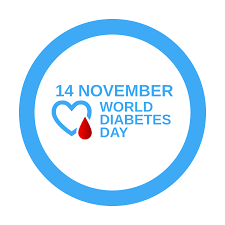Diabetes prevention: 5 tips for taking control
If you have been diagnosed with prediabetes — high blood sugar that doesn’t reach the threshold of a diabetes diagnosis — lifestyle changes can prevent or delay the onset of disease.
Making a few changes in your lifestyle now may help you avoid the serious health complications of diabetes in the future, such as nerve, kidney and heart damage. It’s never too late to start.
1. Lose extra weight
Losing weight reduces the risk of diabetes. People in one large study reduced their risk of developing diabetes by almost 60% after losing approximately 7% of their body weight with changes in exercise and diet.
The American Diabetes Association recommends that people with prediabetes lose at least 7% to 10% of their body weight to prevent disease progression. More weight loss will translate into even greater benefits.
Set a weight-loss goal based on your current body weight. Talk to your doctor about reasonable short-term goals and expectations, such as a losing 1 to 2 pounds a week..
2. Be more physically active
There are many benefits to regular physical activity. Exercise can help you:
Lose weight
Lower your blood sugar
Boost your sensitivity to insulin — which helps keep your blood sugar within a normal range
Goals for most adults to promote weight loss and maintain a healthy weight include:
Aerobic exercise. Aim for 30 minutes or more of moderate to vigorous aerobic exercise — such as brisk walking, swimming, biking or running — on most days for a total of at least 150 minutes a week.
Resistance exercise. Resistance exercise — at least 2 to 3 times a week — increases your strength, balance and ability to maintain an active life. Resistance training includes weightlifting, yoga and calisthenics.
Limited inactivity. Breaking up long bouts of inactivity, such as sitting at the computer, can help control blood sugar levels. Take a few minutes to stand, walk around or do some light activity every 30 minutes
3. Eat healthy plant foods
Plants provide vitamins, minerals and carbohydrates in your diet. Carbohydrates include sugars and starches — the energy sources for your body — and fiber. Dietary fiber, also known as roughage or bulk, is the part of plant foods your body can’t digest or absorb.
Fiber-rich foods promote weight loss and lower the risk of diabetes. Eat a variety of healthy, fiber-rich foods, which include:
Fruits, such as tomatoes, peppers and fruit from trees
Nonstarchy vegetables, such as leafy greens, broccoli and cauliflower
Legumes, such as beans, chickpeas and lentils
Whole grains, such as whole-wheat pasta and bread, whole-grain rice, whole oats, and quinoa
The benefits of fiber include:
Slowing the absorption of sugars and lowering blood sugar levels
Interfering with the absorption of dietary fat and cholesterol
Managing other risk factors that affect heart health, such as blood pressure and inflammation
Helping you eat less because fiber-rich foods are more filling and energy rich
Avoid foods that are “bad carbohydrates” — high in sugar with little fiber or nutrients: white bread and pastries, pasta from white flour, fruit juices, and processed foods with sugar or high-fructose corn syrup.
4. Eat healthy fats
Fatty foods are high in calories and should be eaten in moderation. To help lose and manage weight, your diet should include a variety of foods with unsaturated fats, sometimes called “good fats.”
Unsaturated fats — both monounsaturated and polyunsaturated fats — promote healthy blood cholesterol levels and good heart and vascular health. Sources of good fats include:
Olive, sunflower, safflower, cottonseed and canola oils
Nuts and seeds, such as almonds, peanuts, flaxseed and pumpkin seeds
Fatty fish, such as salmon, mackerel, sardines, tuna and cod
Saturated fats, the “bad fats,” are found in dairy products and meats. These should be a small part of your diet. You can limit saturated fats by eating low-fat dairy products and lean chicken and pork.
5. Skip fad diets and make healthier choices
Many fad diets — such as the glycemic index, paleo or keto diets — may help you lose weight. There is little research, however, about the long-term benefits of these diets or their benefit in preventing diabetes.
Your dietary goal should be to lose weight and then maintain a healthier weight moving forward. Healthy dietary decisions, therefore, need to include a strategy that you can maintain as a lifelong habit. Making healthy decisions that reflect some of your own preferences for food and traditions may be beneficial for you over time.
One simple strategy to help you make good food choices and eat appropriate portions sizes is to divide up your plate. These three divisions on your plate promote healthy eating:
One-half: fruit and nonstarchy vegetables
One-quarter: whole grains
One-quarter: protein-rich foods, such as legumes, fish or lean meats

